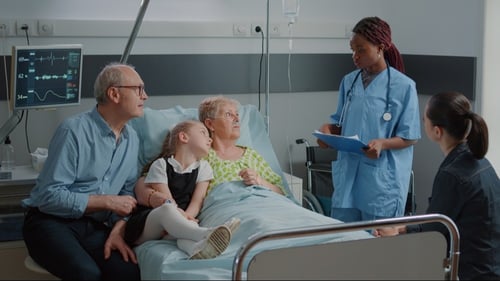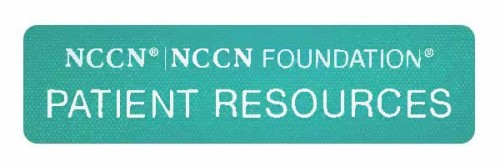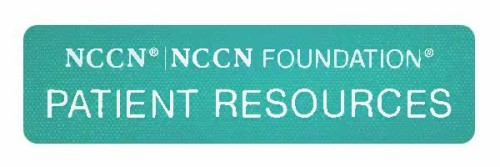Prostate Cancer: Treatment Options
Stay up to date on research and information
Sign Up for FORCE NewslettersMedical Options for Cancer
Most cancer is managed or treated with one or more of the following:
Every option has potential risks and side effects. Before any new treatment or surgery, make sure your healthcare team tells you about what to expect.
Active Surveillance
Active surveillance involves watching the cancer and only treating it if there is any evidence that it is progressing. Doctors may recommend active surveillance based on factors such as life expectancy and the risk of cancer progressing.
During active surveillance cancer is closely watched using prostate-specific antigen () tests, digital rectal exams, and biopsies. If a change indicates the cancer is progressing, other treatment options may be recommended.
Active surveillance may be an option in these settings:
- low-grade (slow growing) cancer for people who wish to defer treatment and potential side effects until it is necessary.
Watchful Waiting
Watchful waiting involves less testing than active surveillance. With watchful waiting, the patient and their doctor monitor any changes in symptoms.
Watchful waiting may be an option for people with cancer who:
- have a life expectancy of less than 10 years.
- have a low-grade cancer and wish to defer treatment indefinitely.
- prefer not to undergo aggressive treatment.
- have other health problems that prevent them from being a candidate for other types of treatment.
Surgery
Prostatectomy is surgery to remove the . Prostatectomy may be used to treat cancer that is only in the .
- The most common surgery for cancer is a radical prostatectomy. During a radical prostatectomy the entire gland is removed. In some situations, nearby are also removed.
- During a nerve-sparing radical prostatectomy, the surgeon tries to save the tiny bundles of nerves—one on each side of the —that control the ability to have an erection. If the cancer is growing into or very close to the nerve bundles, these nerves may need to be removed.
Prostatectomy may be performed through an incision in the abdomen or using laparoscopy.
- With laparoscopy, the surgeon makes a small incision for a small flexible scope with a camera, which is used to see the . Addition small incisions are made to insert surgical instruments needed to perform the prostatectomy.
- During laparoscopic surgery, the surgeon may use a robot. This is sometimes called robot-assisted or robotic prostatectomy.
- Less commonly, prostatectomy may be performed using an incision in the lower abdomen (retropubic prostatectomy) or through an incision between the anus and scrotum
Hormone therapy
What is hormone therapy for cancer?
Testosterone is a type of male reproductive hormone known as an androgen. Androgens are produced by the testes and can cause cancers to grow. Hormone therapy reduces androgen levels in the body or prevents androgen from reaching cancer cells. Hormone therapy is sometimes called androgen-deprivation therapy or androgen-suppression therapy.
Hormone therapy is among the most effective forms of systemic treatment for cancer. Alone, it does not cure cancer. However, it can slow the disease from getting worse.
Hormone therapy is used in the following situations:
- to treat advanced or high-risk cancer.
- to treat cancer when the levels are rising despite previous treatment.
- for treatment in situations where surgery or radiation therapy is not possible.
- to treat cancer which has spread outside of the .
Which hormone therapies are used to treat cancer?
Several types of hormone therapy are available, including:
- Luteinizing hormone-releasing hormone (LHRH) agonists and antagonists block the production of testosterone.
- Anti-androgens bind to androgen receptors and keep testosterone from stimulating the receptor. This helps slow cancer growth. They may be given before treatment in combination with LHRH agonists or LHRH antagonists.
- Androgen-synthesis inhibitors can drop testosterone levels lower than any other treatment. Androgen-synthesis inhibitors may be a better treatment option for advanced or high-grade disease.
- Orchiectomy is surgery to remove the testicles. This is used less commonly than the therapies above. Although orchiectomy is a surgery, it is considered hormone therapy because removal of the testicles suppresses testosterone production.
Type of Agent |
Examples |
Description |
Luteinizing hormone-releasing hormone (LHRH) agonists |
|
These drugs block the production of testosterone. |
Luteinizing hormone-releasing hormone (LHRH) antagonists |
|
These drugs block the production of testosterone. Note that Orgovyx is the only oral LHRH antagonist approved. |
Anti-androgens |
|
Anti-androgens bind to androgen receptors on cells and block testosterone from stimulating the cells. Anti-androgens are not typically used alone. They may be given before treatment in combination with LHRH agonists or LHRH antagonists. |
Androgen-synthesis inhibitors |
Zytiga (abiraterone) |
These drugs can drop testosterone levels lower than other hormone treatments. They may be used to treat advanced prostate cancer that has become resistant to other hormone therapies. |
Radiation therapy
Radiation therapy is used to treat various stages of cancer. Different types of radiation therapy are used for cancer:
- Brachytherapy involves surgery to put radioactive seeds in the to kill the cancer.
- External-beam radiation therapy (EBRT) aims radiation beams from outside the body at the tumor to kill cancer cells. This treatment can be used to cure localized cancers or help relieve symptoms if the cancer has spread. There are different types of external-beam radiation. In some situations, the doctor may inject a gel between the and rectum before radiation treatment starts to separate the rectum from the and protect the rectum from radiation.
- Radium 223 dichloride or Xofigo is used for advanced cancer that is resistant to testosterone-lowering treatments and has spread to the bones. It is given by intravenous (IV) injection.
- Lutetium-177 vipivotide tetraxetan or Pluvicto is used for advanced cancer that is resistant to testosterone-lowering treatments and has spread to the bones. It is given by intravenous (IV) injection. It binds to a molecule called Specific Membrane Antigen (PSMA) in order to target the radiation.
Cryotherapy
During cryotherapy, a small incision is made into which probes are inserted. These probes freeze and kill tissue. Cryotherapy may be used for prostate cancer or when the cancer recurs after radiation therapy.
Chemotherapy
Chemotherapy does not cure cancer. Chemotherapy for cancer is used in advanced or recurrent cancer to extend life or improve quality of life. Chemotherapy for cancer may be recommended for:
- Men with advanced cancer.
- Men who's cancer has returned after treatment.
Chemotherapy for cancer may include one of the following:
- Docetaxel (Taxotere)
- Cabazitaxel (Jevtana)
- Mitoxantrone (Novantrone)
- Carboplatin (Paraplatin)
Targeted therapies and immunotherapies
See this page for information about targeted and immunotherapies.
What is the difference between and ?
Hormone therapy is the most common medical treatment for cancer. is responds to treatment that reduces testosterone levels. no longer responds to these hormonal therapies and may continue to grow or spread.
Treatment side effects
Your healthcare team should explain what you should expect from all treatments, including:
- all of the possible risks and side effects of each treatment.
- which side effects may be serious and how to tell.
- when and who you should call if you experience a side effect.
- what can be done to treat or alleviate each side effect.
Make sure you let your healthcare team know if you experience any side effects of your treatment. For more information about possible treatment side effects, see our section on Cancer Treatment by Treatment Type.
Participate in Research

NePtune: Using PARP Inhibitors Before Surgery in Localized Prostate Cancer
Clinicaltrials.gov identifier:
NCT05498272
In the News

Study : Test score may predict which prostate cancer patients can safely skip combined therapy
This study shows that a test score that estimates the aggressiveness of a person’s prostate cancer may also identify the best treatment for patients. (posted...

Topic : Experts call for early palliative care for cancer patients
People with cancer need support and care not only at the end of life but from the time of diagnosis. At the 2024 American Society...

Study : Physical activity may decrease fatigue associated with cancer treatment
Many cancer survivors experience fatigue during and after they complete treatment. This study looked at the effect of home-based physical activity on fatigue in cancer...

Study : The hidden financial burden of treating cancer care symptoms
Drugs commonly used to treat symptoms of cancer and cancer treatment side effects can cost thousands of dollars out of pocket for patients, depending on...
Learn from Other Experts
NCCN Patient Guidelines for Early-Stage Prostate Cancer

NCCN Patient Guidelines for Advanced-Stage Prostate Cancer

